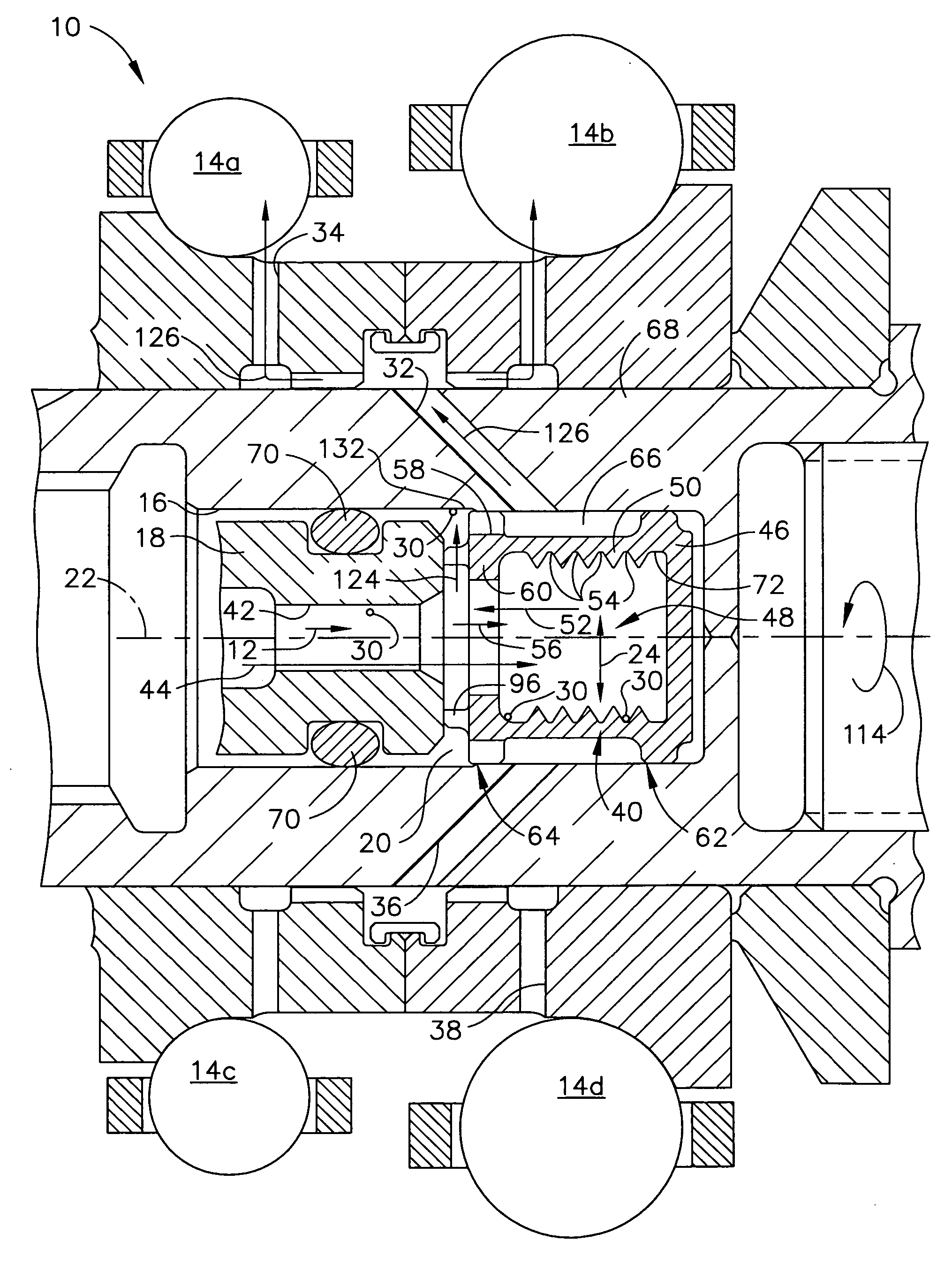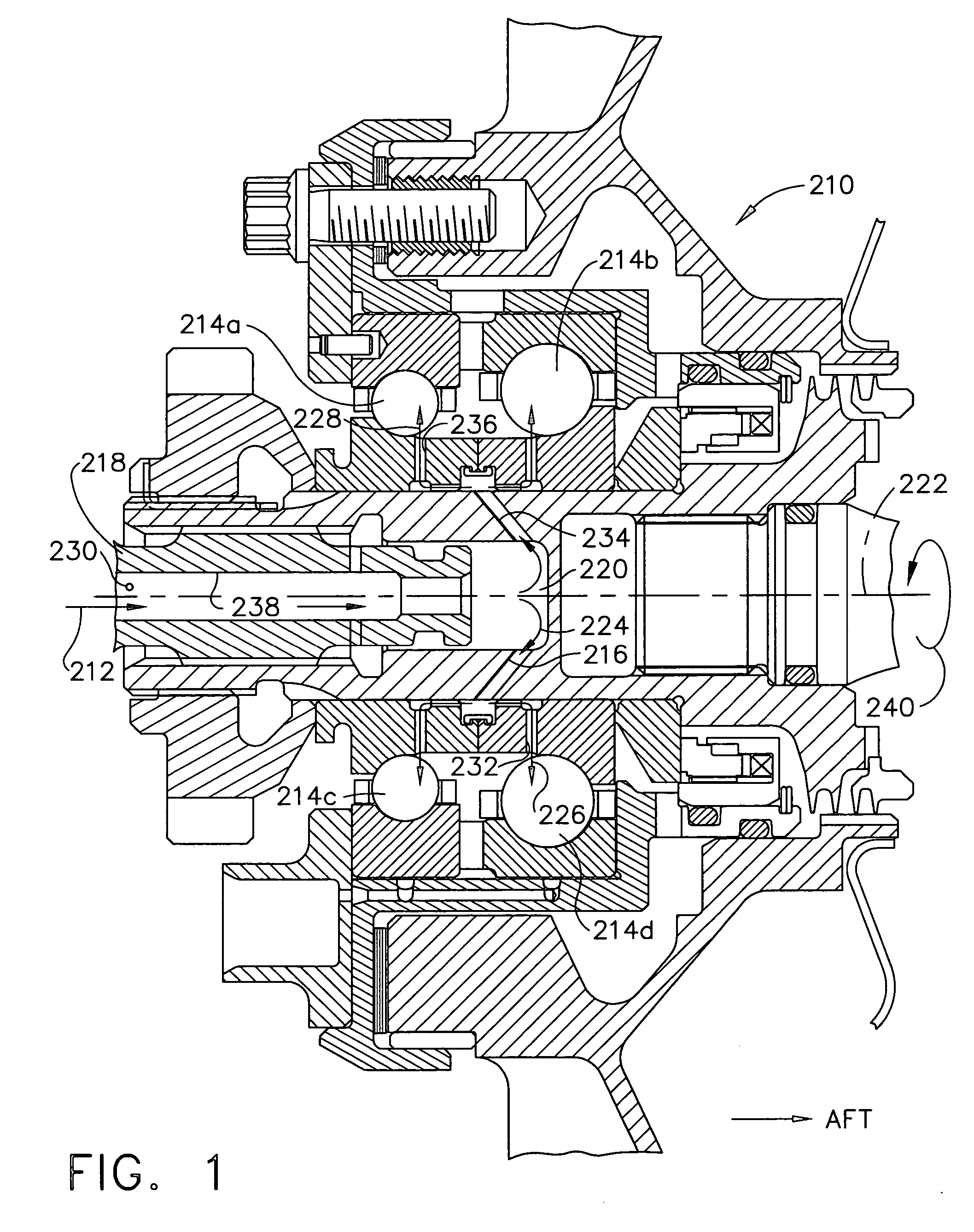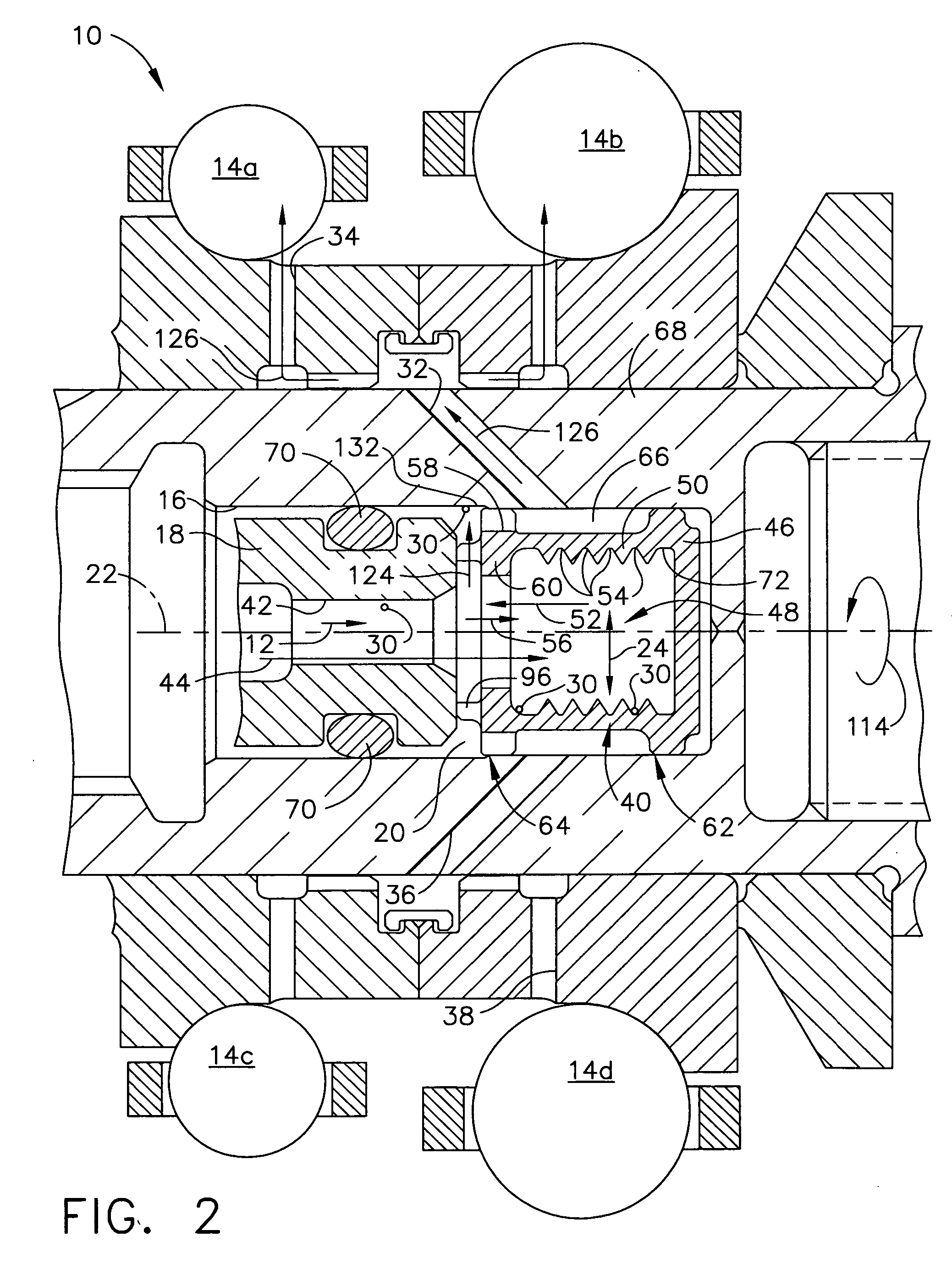Multi-stage centrifugal debris trap
a centrifugal debris and multi-stage technology, applied in the direction of feed/discharge of settling tanks, vortex flow apparatus, machines/engines, etc., can solve the problems of damage to parts, damage to engine rotor groups, and damage to parts,
- Summary
- Abstract
- Description
- Claims
- Application Information
AI Technical Summary
Benefits of technology
Problems solved by technology
Method used
Image
Examples
Embodiment Construction
[0024] The following detailed description is of the best currently contemplated modes of carrying out the invention. The description is not to be taken in a limiting sense, but is made merely for the purpose of illustrating the general principles of the invention, since the scope of the invention is best defined by the appended claims.
[0025] Broadly, the present invention generally provides for a multiple stage centrifugal separation device, generally referred to herein as a debris trap, and methods to remove debris from a fluid. In an embodiment, the present invention may be disposed integral to a system that may direct a fluid to some end use. In another embodiment, the fluid may be filtered and recycled back for use again. In yet another embodiment, the fluid in a system may be single use. This is counter to the prior art, in which debris traps may be provided in systems that recycle fluids.
[0026] In a further embodiment, the debris trap of the present invention may be integral...
PUM
| Property | Measurement | Unit |
|---|---|---|
| inner diameter | aaaaa | aaaaa |
| inner diameter | aaaaa | aaaaa |
| inner diameter | aaaaa | aaaaa |
Abstract
Description
Claims
Application Information
 Login to View More
Login to View More - R&D
- Intellectual Property
- Life Sciences
- Materials
- Tech Scout
- Unparalleled Data Quality
- Higher Quality Content
- 60% Fewer Hallucinations
Browse by: Latest US Patents, China's latest patents, Technical Efficacy Thesaurus, Application Domain, Technology Topic, Popular Technical Reports.
© 2025 PatSnap. All rights reserved.Legal|Privacy policy|Modern Slavery Act Transparency Statement|Sitemap|About US| Contact US: help@patsnap.com



